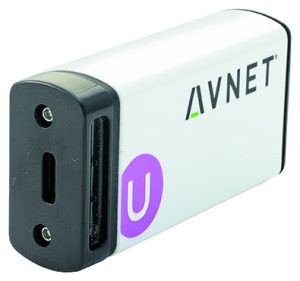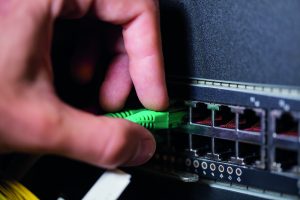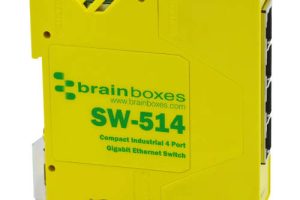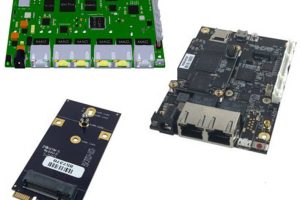Sensing technologies are critical components that enable industrial IoT (IIoT) applications to capture accurate, real-time data about environmental conditions before transmitting data to computers operating locally and in the cloud. Analytics software running on cloud computers can turn the huge quantities of data into actionable information for applications such as predictive maintenance, reducing energy consumption and quality improvement.
With the right architectures and sensing technologies the IIoT is not isolated to organisations with deep pockets. A new generation of smarter sensors that are designed to be easier to install and manage make it just as easy for small- to medium-sized independent businesses to take advantage of the techniques enabled by the IIoT. Sensors are already prevalent in production as many machine tools often have their own internal sensors. These are fitted to ensure they operate within tolerance. However, they generally fit into a closed system and do not provide easy access to the data. But this is changing.
Manufacturing flow
There is a growing trend to develop tools and robots in a more open fashion to support the ability to load new programs and capabilities after installation and, in doing so, enable more flexible production flows. There is also a growing realisation among tool builders that these systems need to co-operate with each other to support flexible production. For example, a tool may adjust paint viscosity to compensate for changes in environmental temperature and humidity. Alternatively, inspection tools can feed back information on finished parts so that out-of-tolerance upstream tools can respond to those issues or be flagged for maintenance.
As a result of the need for flexibility, traditional conveyors that assume a constant flow of material and work-in-progress through a plant are being replaced or upgraded to cope with rapid changes in product types and timings. This calls for sensors that can monitor the presence of products not just within individual machine tools but at points in between. Technologies such as position sensing, imaging and radio frequency identification track the flow of product carriers and sleds to ensure they move to the next point reliably and tools know when to wait and when to start work. Environmental sensors provide vital data about humidity and temperature that can affect material properties. As a result, there is a call for a wide range of sensing modalities to be used, combined with ease of installation, ensuring the right kind of sensor can be used in the right place and be sure of reliable communications.
Wireless connectivity
It is very common for sensors to be retrofitted to work alongside a sensor that is already installed in existing machine tools, making ease of installation an absolute requirement. A key technology to support that requirement is wireless communications. Wireless technologies such as Bluetooth, LoRaWan and Sigfox make it far easier to install sensors precisely where they are needed, such as photoelectric light curtains that separate different production cells, which may be in an otherwise open part of a shopfloor. Having to provide fixed network connectivity is an issue, especially if later changes call for the curtain or similar photoelectric presence-detection sensors to be moved or realigned. With wireless connectivity, all that is required is a power source and low-power sensors may simply rely on local batteries.
Using standard wireless protocols, engineers can ensure compatibility with the widest range of off-the-shelf gateways. These gateways ensure that data packets are properly formatted into internet protocol frames for relaying to the cloud or edge computers that are registered to receive the data. By using standard protocols, upgrades in functionality are easy to support either through firmware updates sent over the air or through new hardware that supports the same protocol.
 Another key advantage of using wireless-enabled sensors is that many of them incorporate their own microcontrollers that can handle data processing and formatting before transmission. This local intelligence can be used to filter out unimportant data. For example, a position sensor need only trigger if it senses an object in range instead of feeding negative detections to a gateway over the wireless connection. This helps minimise extraneous traffic and relieves the compute burden on downstream servers. The local processing can also go a step further. For example, clusters of smart photoelectric sensors can detect patterns in an object structure and trigger an alert if it does not conform to the expected outline. For example, it may alert a more sophisticated image sensor to wake up and inspect the object before triggering further alerts downstream. As pattern detections happen autonomously in the sensor, rather than within the central processor of a local programmable logic controller, this reduces the load and helps increase the lifetime of legacy equipment that may still be required on the shopfloor.
Another key advantage of using wireless-enabled sensors is that many of them incorporate their own microcontrollers that can handle data processing and formatting before transmission. This local intelligence can be used to filter out unimportant data. For example, a position sensor need only trigger if it senses an object in range instead of feeding negative detections to a gateway over the wireless connection. This helps minimise extraneous traffic and relieves the compute burden on downstream servers. The local processing can also go a step further. For example, clusters of smart photoelectric sensors can detect patterns in an object structure and trigger an alert if it does not conform to the expected outline. For example, it may alert a more sophisticated image sensor to wake up and inspect the object before triggering further alerts downstream. As pattern detections happen autonomously in the sensor, rather than within the central processor of a local programmable logic controller, this reduces the load and helps increase the lifetime of legacy equipment that may still be required on the shopfloor.
Such smart object detection and imaging sensors can significantly improve flexibility in manufacturing. They can be remotely programmed with suitable parameters every time a product change is required. Production, inspection, packaging and dispatch can be set for even single-unit batch sizes, supporting customisation at mass-production prices.
Environmental sensors
Smart filtering capability is one of the features of Omega’s Layer N Smart sensors. The modules are designed to be easy to install and manage. The sensors are paired to a Layer N gateway with the press of a button, letting them automatically connect to a Layer N cloud device. At the same time, maintaining backwards compatibility with legacy devices is possible using Modbus-interface modules.
Security is a key attribute of the Layer N solution that eases integration as well as concerns over how data is managed. Omega has designed Layer N to incorporate threat-mitigating security measures in every zone between the sensing, gateway and cloud platforms used.
The focus on security helps with another key advantage of Layer N, which is its support for long-range communications. Large campuses and field installations are particularly vulnerable to wireless snooping. Using frequency hopping spread spectrum technology, Layer N can support wireless links of up to 1.2km to sensors powered using standard AA batteries. If mains power is available through a micro-USB cable, this can be extended to 3.2km, providing access to temperature and humidity data among other sensing modalities.
 LoRaWAN and Sigfox technologies provide the ability to deliver data over even longer distances before needing to be relayed by a gateway. LoRaWAN also has built-in encryption to protect both network and user data to make sure the data is fully protected. Devices such as the WISE-2410 LoRaWAN Wireless Condition Monitor sensor from Advantech make it possible to monitor the status of plant machinery even in remote locations by measuring vibration and surface temperatures. The sensor can diagnose anomalies using criteria set out by the ISO 10816 vibration monitoring standard, reducing the need for users to create their own analysis tools. Protected to IP66, the sensor is suitable for use in diverse applications such as HVAC systems, pumps, motors and facility monitoring.
LoRaWAN and Sigfox technologies provide the ability to deliver data over even longer distances before needing to be relayed by a gateway. LoRaWAN also has built-in encryption to protect both network and user data to make sure the data is fully protected. Devices such as the WISE-2410 LoRaWAN Wireless Condition Monitor sensor from Advantech make it possible to monitor the status of plant machinery even in remote locations by measuring vibration and surface temperatures. The sensor can diagnose anomalies using criteria set out by the ISO 10816 vibration monitoring standard, reducing the need for users to create their own analysis tools. Protected to IP66, the sensor is suitable for use in diverse applications such as HVAC systems, pumps, motors and facility monitoring.
Many sensing technologies now take advantage of MEMS construction, which means that even physically small smart sensors can pull together many more sensing modalities to provide more comprehensive updates on environmental conditions. An example is the 2JCIE-BU environment sensor manufactured by Omron Electronics. Offering both USB and Bluetooth connectivity, it incorporates humidity, light, barometric pressure, sound noise and three-axis acceleration sensing. It can also provide continuous monitoring of room air quality when coupled with a volatile organic compound sensor and can help to ensure safe production conditions for staff.
In situations where a desired modality does not yet exist, off-the-shelf compute and microcontroller boards with Bluetooth and Wi-Fi compatibility provide the ability to host custom-designed adapters that can incorporate a wide range of sensors. Edge servers and gateway hardware modules also provide opportunities for customisation. An example is the SmartEdge Agile by Avnet, which can be customised for a range of industrial applications. In addition to acting as a gateway, it includes nine sensors. Design engineers can implement artificial intelligence at the edge through a zero-code interface to support applications such as predictive maintenance and advanced real-time monitoring and analysis.
Transition to industry 4.0
The use of smart sensors is critical to the success of society’s transition to embrace Industry 4.0, a transition that will let organisations run their production facilities more efficiently. The ability to process data locally, format it and deliver it wirelessly ensures that systems can be upgraded incrementally and easily, providing a link between legacy equipment and cloud analytics to drive improvements. Given the variety of applications and sensor modalities, it is important to choose a supply-chain partner with global reach and experience to provide access to these products for large organisations and a range of small- to medium-sized enterprises.
 Electronics Weekly Electronics Design & Components Tech News
Electronics Weekly Electronics Design & Components Tech News



